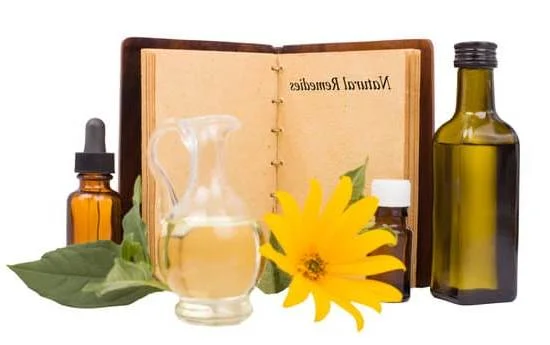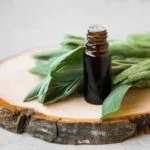An aromatherapy diffuser is a device that disperses essential oils into the air, filling your surroundings with their delightful scents and therapeutic properties. In this introductory section, we will explore what an aromatherapy diffuser is and how it works to create a relaxing and therapeutic environment. Additionally, we will delve into the various benefits of using these diffusers and provide scientific evidence supporting their effectiveness.
Aromatherapy diffusers are designed to disperse essential oils throughout a room using various mechanisms such as ultrasonic vibrations, heat, or evaporation. They are often used to improve sleep quality, alleviate stress and anxiety, enhance focus and concentration, boost immunity, and uplift moods. These diffusers not only have aromatherapeutic benefits but also serve as stylish decor pieces that can add elegance to any space.
Understanding the science behind how these diffusers work is crucial for maximizing their potential benefits. By breaking down the essential oils into tiny particles and releasing them into the air in a controlled manner, these devices allow you to take full advantage of their healing properties. Whether you are new to aromatherapy or simply seeking ways to enhance your environment with lovely fragrances, this article will guide you through the process of setting up an aromatherapy diffuser effectively.
Now that we have laid the foundation by exploring what an aromatherapy diffuser is and how it operates, let us move on to the next section where we will uncover the wide range of benefits associated with using these devices.
Benefits of Using an Aromatherapy Diffuser
Aromatherapy diffusers have gained popularity in recent years due to their ability to disperse essential oils and provide a variety of benefits. Using an aromatherapy diffuser not only fills the air with pleasant scents, but it can also have positive effects on our physical and mental well-being.
One of the main benefits of using an aromatherapy diffuser is stress relief. The inhalation of certain essential oils, such as lavender or chamomile, has been shown to reduce anxiety and promote relaxation. A study published in the Journal of Alternative and Complementary Medicine found that participants who were exposed to lavender oil through inhalation experienced decreased levels of stress and improved mood.
Additionally, aromatherapy diffusers can be used to improve sleep quality. Certain essential oils, such as valerian or bergamot, have sedative properties that can help promote a restful night’s sleep. Research has shown that inhaling these oils before bedtime may improve the duration and quality of sleep.
In terms of enhancing focus and concentration, essential oils like peppermint or rosemary have been found to stimulate the mind and increase alertness. A study published in the International Journal of Neuroscience found that participants who were exposed to peppermint oil experienced improved cognitive performance compared to those who were not exposed to the scent.
| Benefits | Scientific Evidence |
|---|---|
| Stress Relief | A study in the Journal of Alternative and Complementary Medicine found that inhalation of lavender oil reduced stress levels. |
| Improved Sleep | Essential oils such as valerian or bergamot have sedative properties that may help promote better sleep. |
| Increased Focus | A study in the International Journal of Neuroscience showed improved cognitive performance with exposure to peppermint oil. |
Using an aromatherapy diffuser can provide a wide range of benefits for both the body and mind. Whether you are looking to reduce stress, improve sleep, or enhance focus, incorporating essential oils into your daily routine through a diffuser can help promote overall well-being.
Choosing the Right Aromatherapy Diffuser for Your Needs
Choosing the right aromatherapy diffuser for your needs is an important step in creating a soothing and effective environment for your aromatherapy practice. With a variety of diffusers available in the market, it can be overwhelming to make a decision. However, understanding the different types of diffusers and considering your specific preferences will help you find the perfect one for you.
Types of Aromatherapy Diffusers
There are several types of aromatherapy diffusers, each with its own advantages and disadvantages.
- Ultrasonic Diffusers: These diffusers use ultrasonic vibrations to break down essential oils into a fine mist that is released into the air. They are popular because they also act as humidifiers, adding moisture to the air. Ultrasonic diffusers are great for larger spaces and provide continuous diffusion.
- Nebulizing Diffusers: Nebulizing diffusers work by using pressurized air to create fine particles of essential oils that are then dispersed into the air as a pure mist without water or heat. They are highly effective at delivering therapeutic benefits but tend to be more expensive and may not be ideal for those with sensitivities or allergies.
- Evaporative Diffusers: These diffusers use a fan or natural airflow to evaporate essential oils from a pad or filter. The oil molecules are then released into the air, but because they evaporate quickly, their scent may not last long compared to other types of diffusers.
- Heat Diffusers: Heat diffusers utilize heat to gently warm essential oils, causing them to evaporate into the surrounding space. While they are simple to use and affordable, they may alter the chemical composition of certain oils and reduce their therapeutic benefits.
Tips for Choosing the Right Diffuser
When selecting an aromatherapy diffuser, consider these factors:
- Room Size: Choose a diffuser that is suitable for the size of the room you intend to use it in. Larger rooms will require a diffuser with a higher mist output or larger water capacity.
- Aesthetic Preferences: Diffusers come in various designs and materials, so choose one that matches your personal style and complements the decor of your space.
- Desired Features: Consider what features are important to you. Some diffusers have built-in timers, color-changing lights, or different diffusion settings that allow you to customize your aromatherapy experience.
- Noise Level: If you prefer a quiet environment, look for diffusers that operate silently or have a low noise level rating.
Remember to also take into account any personal preferences or sensitivities when choosing an aromatherapy diffuser. By selecting the right diffuser for your needs, you can enhance your aromatherapy practice and create a relaxing atmosphere in your home, office, or bedroom.
Gathering Essential Oils for Aromatherapy
As essential oils play a crucial role in aromatherapy, it is important to gather the right oils for your needs. Each essential oil has its own therapeutic properties, and understanding these properties will help you choose the oils that best suit your desired effects.
There are a wide variety of essential oils available on the market, each offering unique benefits. For example, lavender oil is well-known for its calming effects and can help promote relaxation and sleep. On the other hand, citrus essential oils like lemon or bergamot are known for their energizing and mood-lifting properties. Other popular essential oils include peppermint for improved focus and concentration, eucalyptus for respiratory support, and tea tree oil for its antibacterial properties.
When purchasing essential oils, it is important to look for high-quality options. Pure essential oils should be free from additives or synthetic ingredients that can dilute their effectiveness. Look for reputable brands that offer pure and natural products.
Proper storage of essential oils is also crucial to maintain their potency and prevent deterioration over time. Store your essential oils in dark-colored glass bottles in a cool and dry place away from direct sunlight. This helps to preserve their aromatic compounds and extend their shelf life.
| Essential Oil | Therapeutic Properties |
|---|---|
| Lavender | Calming, relaxing, promotes sleep |
| Lemon | Energizing, mood-lifting |
| Peppermint | Improved focus, concentration |
| Eucalyptus | Respiratory support, clears congestion |
| Tea Tree | Antibacterial, antifungal properties |
Preparing Your Diffuser for Use
Setting up an aromatherapy diffuser requires some initial preparation to ensure it functions properly and safely. This section will provide a step-by-step guide on assembling the diffuser, as well as tips for cleaning and maintenance.
Step-by-Step Guide on Assembling the Diffuser
- Read the Instruction Manual: Before starting the assembly process, it is essential to read the instruction manual provided with your diffuser. Every model may have slight variations in their setup process, so familiarize yourself with the specific guidelines.
- Open the Diffuser: Start by removing all parts of the diffuser from its packaging. Carefully open the main unit or reservoir by following any instructions if necessary. Most diffusers have a lid or cover that can be easily lifted.
- Insert the Components: Inside the main unit, you will find various components that need to be inserted correctly for proper functioning. This typically includes a water tank, a diffusion unit or atomizer, and sometimes additional features like timers or LED lights.
- Fill with Water: Once all necessary components are inserted correctly, fill the water tank with clean and preferably distilled water. Ensure that you do not fill beyond the maximum water level indicated to avoid any leakage.
- Add Essential Oils (Optional): If desired, add a few drops of your chosen essential oil to the water in the tank. The number of drops required may vary according to personal preference and instructions provided with your particular diffuser model.
- Close and Secure: After adding water and oils (if using), carefully close and secure any openings or lids on the diffuser to prevent any accidental spills during usage.
Proper Cleaning and Maintenance of the Diffuser
Regular cleaning and maintenance are vital for keeping your aromatherapy diffuser working effectively over time:
- Regular Cleaning: After each use, it is recommended to clean your diffuser. Follow the instructions provided by the manufacturer on how to clean the specific model you own. In general, cleaning involves emptying any remaining water, wiping down the surfaces with a soft cloth or q-tip, and removing any residue or buildup.
- Deep Cleaning: To perform a deep clean periodically, refer to your instruction manual for specific guidelines. It may involve disassembling certain components and using a mild soap solution to remove any stubborn impurities.
- Maintenance Tips: Avoid using harsh chemicals or abrasive materials when cleaning your diffuser, as this could damage the unit. Additionally, consider replacing the water in your diffuser tank daily to prevent any mold or bacterial growth.
By following these steps and properly maintaining your diffuser, you can ensure its longevity and continue enjoying the benefits of aromatherapy diffusion for years to come.
How to Set Up Your Aromatherapy Diffuser
Setting up your aromatherapy diffuser is a simple and straightforward process that requires a few basic steps. By following these instructions, you’ll be able to enjoy the benefits of essential oil diffusion in no time.
Step 1: Assemble the Diffuser
Depending on the type of diffuser you have, assembly may involve connecting different parts or simply placing the essential oil tray in position. Refer to your diffuser’s instruction manual for specific guidance on how to assemble it correctly.
Step 2: Clean and Prepare the Diffuser
Before using your diffuser for the first time, it’s important to clean it thoroughly. This will help ensure optimal performance and prevent any residue from previous uses from interfering with the aroma of new oils. Follow the cleaning instructions provided by your diffuser manufacturer.
Step 3: Fill with Water and Essential Oils
Once your diffuser is assembled and clean, fill it with water up to the specified fill line. It’s crucial not to overfill as this can lead to spills or damage to the unit. Next, add your chosen essential oils. The recommended oil-to-water ratio varies depending on your diffuser type and personal preference but generally ranges from 3-10 drops of essential oil per 100 ml of water.
Step 4: Start Diffusing
Now that your diffuser is filled with water and essential oils, place the cover back onto the base securely. Plug in your diffuser and turn it on according to its specific settings or timer functions. Enjoy as soothing mist fills the room, carrying the aromatic molecules into the air for you to breathe in.
Safety Precautions:
- Always follow safety guidelines provided by your specific diffuser manufacturer.
- Ensure that your diffuser is placed on a stable, flat surface away from the reach of children and pets.
- Keep the diffuser away from heat sources, direct sunlight, and water-sensitive materials to avoid damage or accidents.
- Never leave your diffuser unattended while it is in use.
Now that your aromatherapy diffuser is set up, you can begin reaping the benefits of essential oil diffusion. Experiment with different oils and diffusion settings to find what works best for you. Whether you’re seeking relaxation, focus, or energy enhancement, aromatherapy has a wide range of potential benefits to offer. Enjoy the soothing scents and embrace the positive impact they can have on your well-being.
Maximizing the Benefits of Aromatherapy Diffusion
Aromatherapy diffusion can be a powerful tool for promoting relaxation, improving mood, and enhancing overall well-being. By using specific essential oil blends and adjusting the diffusion settings, you can tailor your aromatherapy experience to achieve desired effects. Here are some tips on maximizing the benefits of aromatherapy diffusion.
One way to maximize the benefits of aromatherapy diffusion is by selecting the right essential oil blends based on your desired effects. For example, if you’re looking to create a calming environment, consider blending lavender and chamomile essential oils. On the other hand, if you want to energize and uplift your mood, try diffusing citrus oils such as lemon or grapefruit. Research different essential oils and their therapeutic properties to determine which blend is best suited for your needs.
In addition to choosing the right essential oil blend, it’s also important to adjust the diffusion settings and timing for optimal results. Most diffusers have different mist modes that allow you to control the intensity of aroma dispersal. Experiment with different settings to find what works best for you.
If you prefer a subtle scent, setting your diffuser on intermittent mode may be more suitable. On the other hand, if you want a stronger aroma or need immediate relief from stress or anxiety, using continuous mode at higher settings might be more beneficial.
It’s not only important to adjust the diffusion settings but also consider incorporating aromatherapy into different environments. For example, in an office setting, diffusing stimulating oils such as rosemary or peppermint can improve focus and concentration. In the bedroom, lavender oil can promote relaxation and better sleep quality. Experiment with different essential oil blends in various environments to enhance their effectiveness.
By following these tips and exploring different essential oils and diffusion techniques, you can fully enjoy the benefits of aromatherapy diffusion in your daily life. Remember that everyone’s preferences and needs are different, so it may take some trial and error to find the perfect combination for you. Start by selecting high-quality essential oils, adjusting your diffuser settings accordingly, and experimenting with different environments to create a personalized aromatherapy experience that maximizes the benefits for your well-being.
Troubleshooting Common Diffuser Issues
When using an aromatherapy diffuser, it’s important to be aware of potential issues that may arise. While diffusers are generally reliable and easy to use, there are certain common problems that can affect their functionality. Here are some troubleshooting tips to help you address these issues and maintain the optimal performance of your diffuser:
- Clogging: Over time, essential oils can build up in the diffuser, leading to clogging and reduced mist output. To prevent this, it is recommended to clean your diffuser regularly according to the manufacturer’s instructions. Use a soft cloth or cotton swab dipped in rubbing alcohol to gently wipe away any residue on the ultrasonic plate or other parts of the device.
- Inadequate Mist Output: If you notice that your diffuser is not producing enough mist, there could be several reasons for this issue. First, check if there is enough water in the tank as insufficient water level can result in decreased mist output. Additionally, ensure that you have followed the proper oil-to-water ratio recommended for your specific diffuser model. Adjusting the amount of essential oil used can also help improve mist production.
- Unusual Smells: Sometimes, a diffuser may emit strange odors instead of the pleasant aroma of essential oils. This could be due to a buildup of residual oils from previous uses. To address this issue, thoroughly clean your diffuser with warm soapy water and make sure all traces of old oils are removed before adding new ones.
- Diffusion Intensity: If you find that the diffusion intensity is too strong or too weak for your liking, there are ways to adjust it based on personal preference and room size. For example, if you prefer a more subtle scent, try decreasing the amount of essential oil used or reducing the diffusion time by setting a timer on your device.
On the other hand, if you want a stronger aroma, increase the amount of oil or extend the diffusion time.
By following these troubleshooting tips, you can overcome common issues with your aromatherapy diffuser and continue enjoying the benefits of diffusing essential oils. Remember to also refer to your diffuser’s user manual for specific instructions on maintenance and problem-solving. With proper care, your diffuser will provide you with a soothing and aromatic atmosphere for a long time to come.
Conclusion
In conclusion, incorporating an aromatherapy diffuser into your daily routine can provide a multitude of benefits for both your physical and mental well-being. By dispersing essential oils into the air, these diffusers can help relieve stress, improve sleep, enhance focus, and much more. Scientific evidence and studies have shown the effectiveness of aromatherapy in promoting relaxation and overall wellness.
Choosing the right aromatherapy diffuser for your needs is essential to maximize these benefits. The market offers various types of diffusers, such as ultrasonic, nebulizing, evaporative, and heat diffusers. Consider factors like room size, aesthetic preferences, and desired features when selecting a diffuser that suits you best.
To fully enjoy the benefits of aromatherapy diffusion, it is important to gather high-quality essential oils with therapeutic properties. Store them properly to maintain their potency for longer periods of time. Properly preparing your diffuser for use involves assembling it correctly and following recommended cleaning and maintenance procedures.
Setting up your aromatherapy diffuser entails filling it with water and adding essential oils based on the recommended oil-to-water ratio for your specific type of diffuser. It is vital to adhere to safety precautions during this process to prevent accidents or damaging the device.
Finally, by exploring different essential oil blends based on desired effects and adjusting diffusion settings accordingly, you can maximize the benefits of aromatherapy diffusion in different environments such as home, office, or bedroom. Troubleshooting common issues that may arise with your diffuser will ensure its long-lasting functionality.
Overall, embracing aromatherapy diffusion as part of your self-care routine allows you to indulge in its numerous benefits. Experiment with various essential oils and techniques to find what works best for you. So go ahead and start enjoying all that aromatherapy diffusers have to offer.
Frequently Asked Questions
How do you set up an aromatherapy diffuser?
To set up an aromatherapy diffuser, you first need to select a suitable location for it. Choose an area where the diffuser will be stable and away from any water-sensitive or delicate surfaces. Next, remove the cover or top of the diffuser, exposing the inner reservoir. Fill the reservoir with water, making sure not to exceed its maximum fill line.
Afterward, add a few drops of your chosen essential oil into the water. It is recommended to start with about 3-5 drops, but you can adjust the amount based on your personal preference. Once everything is set up, securely place the cover back onto the diffuser and plug it into a power source. Finally, turn on the diffuser according to its specific instructions and enjoy the aromatic experience.
Why is there no mist coming out of my diffuser?
There can be several reasons why no mist is coming out of your diffuser. Firstly, check if there is enough water in the reservoir as low water levels can prevent mist production. Additionally, ensure that you have properly secured the cover or top of the diffuser as any gaps may inhibit mist diffusion.
It’s also important to verify that your diffuser is turned on and functioning correctly; some models may require specific settings such as mist intensity adjustment or timer activation to release mist. Furthermore, examine if there are any blockages within the device’s air outlet or vent that could obstruct proper mist output. If none of these seem to be causing the issue, consult your diffuser’s manual or contact customer support for further assistance.
How much oil and water do you put in a diffuser?
The amount of oil and water needed in a diffuser depends on various factors such as personal preference and room size; however, there are general guidelines to follow. Typically, most diffusers require filling their reservoir with water up to its maximum fill line mark while ensuring not to overfill it as this could cause operational issues or leakage. As for oils, most experts recommend using 3-5 drops of essential oil per 100 mL of water.
This ratio can be adjusted based on the desired strength of the scent or personal preference, keeping in mind that too much oil can overpower the aroma and potentially clog the diffuser. It is always a good idea to refer to the manufacturer’s instructions for specific recommendations regarding oil and water amounts.

Are you looking for a natural way to improve your health and wellbeing?
If so, aromatherapy may be the answer for you.





